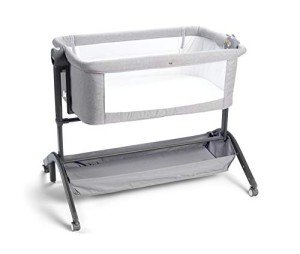This company has no active jobs
About Us
17 Reasons You Shouldn’t Avoid Baby Cot Bed
The Ultimate Guide to Choosing a Baby Cot Bed: Safety, Features, and More
When it pertains to welcoming a brand-new baby, one of the most important purchases moms and dads will make is a baby cot bed. This vital furniture piece is not just where a baby will sleep; it’s likewise a space of comfort, security, and security. Provided the multitude of options available on the marketplace today, making an informed choice can be overwhelming. This guide intends to simplify the process by covering essential features, security standards, kinds of cot beds, and a lot more.
Table of Contents
- Intro
- What is a Baby Cot Bed?
- Safety Standards
- Types of Baby Cot Beds
- 4.1 Traditional top Rated cots
- 4.2 Convertible Cot Beds
- 4.3 Portable Cots
- Secret Features to Consider
- Picking the Right Mattress
- Establishing the Cot Bed
- FAQs
- Conclusion
1. Intro
A baby cot bed works as a devoted sleeping location for infants and is created to provide comfort and security. As brand-new moms and dads navigate the numerous choices available, it is vital to comprehend the different kinds of cot beds, safety guidelines, and essential features to make the best selection.
2. What is a Baby Cot Bed?
A baby cot bed is a specialized piece of furniture where babies sleep. Unlike routine beds, cot beds are particularly designed for babies and supply a safe environment for them to rest. They generally include high sides to avoid children from falling out and typically come with adjustable bed mattress heights to accommodate a growing kid.
3. Security Standards
When choosing a baby cot bed, security should be the primary factor to consider. Here are some crucial safety requirements to bear in mind:
- Certification: Ensure the cot bed fulfills national and worldwide security requirements, such as the ASTM International and Consumer Product Safety Commission (CPSC) guidelines.
- Slat Spacing: The distance in between slats need to not exceed 2 3/8 inches to prevent the baby’s head from slipping through.
- Stability: Ensure that the cot bed does not wobble or shake.
- Non-Toxic Materials: Check for non-toxic finishes and products to guarantee the baby’s safety.
4. Kinds Of Baby Cot Beds
The marketplace offers different kinds of cot beds, each accommodating various needs. Below is an overview of the most typical types:
4.1 Traditional Cots
Conventional cots are standalone furnishings products created particularly for babies. They generally come with fixed sides and several adjustable bed mattress heights.
4.2 Convertible Cot Beds
Convertible cot beds can be transformed into young child beds, enabling for extended usage. This type is an economical option as it grows with your kid.
4.3 Portable Cots
Portable cots, also referred to as travel cots or playards, are lightweight and developed for families on the go. They can be quickly assembled and taken apart for travel.
5. Secret Features to Consider
When picking a cot bed, moms and dads must consider the following features:
- Adjustable Mattress Height: This function permits decreasing the mattress as the baby grows, making it easier for moms and dads to lift the kid.
- Material Quality: Look for a cot bed made from long lasting, non-toxic wood.
- Security Features: Some cot beds come with rounded edges and extra security locking systems.
- Reduce of Assembly: Check if the cot bed needs minimal tools for assembly and how simple it is to take apart.
- Storage Options: Some cot beds include built-in drawers for saving baby fundamentals.
6. Choosing the Right Mattress
The ideal mattress is vital for your baby’s sleep quality. Here are some pointers for selecting an appropriate mattress:
- Firmness: A mattress ought to be firm sufficient to avoid the baby from sinking in too deep, decreasing the threat of suffocation.
- Breathability: Opt for breathable materials to guarantee proper air flow.
- Water-Resistance: Consider water resistant covers for simple cleansing and health.
7. Establishing the Cot Bed
Setting up the cot bed correctly is necessary for security. Here are actions parents should follow:
- Choose the Right Location: Place the cot bed away from windows, cords, and other possible dangers.
- Check the Height: Adjust the mattress height based on the child’s age and movement.
- Eliminate Extras: Avoid placing pillows, blankets, or stuffed toys inside the cot bed when the baby is sleeping.
- Examine Regularly: Regularly inspect all components and screws for wear and tear.
8. Frequently asked questions
Q1: At what age should a baby transition from a cot to a bed?
Many kids transition to a toddler bed in between 18 months to 3 years, depending upon their advancement and individual needs.
Q2: How can I guarantee my baby sleeps safely in their cot bed?
Ensure the cot is without soft bedding, toys, and anything that could block the baby’s breathing. Follow all safety standards thoroughly.
Q3: Is it needed to have a separate nursery for the cot bed?
While lots of parents select to have a different nursery, it is not a requirement. As long as the cot bed is in a safe and peaceful environment, it can be placed in the moms and dads’ bedroom.
Q4: When is it safe to lower the bed mattress?
Normally, the mattress should be lowered when the baby can pull themselves up or when they can sit individually, normally around 6 months.
9. Conclusion
Picking the best baby cot bed is an essential element of preparing for a brand-new arrival. Parents need to prioritize safety, performance, and quality, ensuring that the cot bed meets their family’s special requirements. By putting in the time to research study and understand various types of cot beds, parents can offer a safe and comfortable sleeping environment for their kid to prosper.
With mindful consideration, parents can make sure that the cot bed is not simply a piece of furniture, but a sanctuary where their baby can sleep soundly throughout those essential early years.



